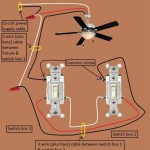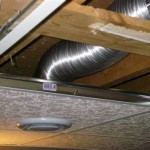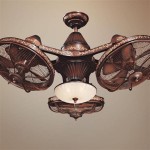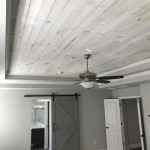What Are School Ceiling Tiles Made Of?
School ceiling tiles, ubiquitous in educational environments, serve multiple crucial functions. They contribute to noise reduction, improve lighting efficiency, and can conceal building infrastructure like wiring and ductwork. Understanding the composition of these tiles is essential for addressing concerns related to indoor air quality, maintenance, and environmental sustainability. The materials used in their manufacture have evolved over time, reflecting changes in building codes, technological advancements, and a growing awareness of health and safety issues.
The primary role of ceiling tiles is acoustic control. Classrooms, cafeterias, and hallways can be notoriously noisy environments. Ceiling tiles absorb sound waves, reducing reverberation and echo, which improves speech intelligibility and minimizes distractions. This creates a more conducive learning environment. In addition, ceiling tiles often contribute to the aesthetic appeal of a space, providing a clean and uniform appearance. They can also enhance the overall lighting by reflecting light, reducing the need for excessive artificial illumination.
Furthermore, ceiling tiles can play a significant role in fire safety. Many modern ceiling tiles are designed to be fire-resistant, providing a crucial layer of protection in the event of a fire. They can slow the spread of flames and provide valuable time for evacuation. Access to building infrastructure is also facilitated by ceiling tiles. Components such as electrical wiring, plumbing, and HVAC systems are typically concealed above the ceiling grid, and the tiles can be easily removed for maintenance and repairs.
Mineral Fiber Ceiling Tiles
One of the most common types of school ceiling tiles is made from mineral fiber. These tiles are manufactured using a combination of mineral wool, recycled paper or newspaper, and binding agents. The mineral wool, often composed of slag wool or rock wool, provides excellent acoustic absorption and fire resistance. The recycled paper component contributes to the tile's structural integrity and also promotes sustainability by utilizing waste materials. Different types of binding agents are used to hold the materials together, and these can include starch, clay, or chemical binders.
The manufacturing process for mineral fiber tiles typically involves blending the mineral wool, recycled paper, and binding agents with water to form a slurry. This slurry is then spread onto a continuous belt and passed through a series of rollers to compress and shape it into the desired thickness. The resulting mat is then dried in ovens to remove the excess moisture and harden the material. After drying, the tiles are cut to size and may be coated with a paint or decorative finish. The coating not only enhances the aesthetic appeal of the tiles but also provides additional protection against moisture and staining.
Mineral fiber ceiling tiles offer a number of advantages. They are relatively inexpensive, readily available, and provide good acoustic performance. The use of recycled content makes them a more environmentally friendly option compared to some other types of ceiling tiles. They are also generally easy to install and maintain. However, mineral fiber tiles can be susceptible to moisture damage. If exposed to excessive humidity or water leaks, they can sag, stain, or even develop mold growth. It's therefore crucial to address any leaks promptly and ensure proper ventilation in areas where mineral fiber tiles are used.
Furthermore, the older types of mineral fiber tiles sometimes contained asbestos. Asbestos was commonly used in building materials prior to the 1980s due to its excellent fire-resistant properties. If a school building contains asbestos-containing ceiling tiles, it's vital to have them properly inspected and managed by trained professionals. Disturbing asbestos-containing materials can release harmful fibers into the air, posing a health risk. Therefore, replacement or encapsulation of these tiles is often the recommended course of action.
Fiberglass Ceiling Tiles
Fiberglass ceiling tiles are another popular choice for schools. These tiles are made from glass fibers bonded together with a resin. They offer excellent acoustic absorption and are particularly effective at reducing noise levels in large spaces. Fiberglass tiles are also lightweight, making them easy to handle and install. Typically, fiberglass ceiling tiles consist of a fiberglass core faced with a decorative fabric or other surface finish. The facing material can be chosen to complement the overall design of the space.
The manufacturing process involves melting glass and spinning it into fine fibers. These fibers are then mixed with a resin binder and formed into a mat. The mat is then compressed and cured to create a rigid tile. The facing material is then applied to the surface of the tile. The specific types of resins and facing materials used can vary depending on the desired properties of the tile. Some fiberglass tiles are designed to be particularly resistant to moisture, while others are designed for enhanced acoustic performance.
One of the key advantages of fiberglass ceiling tiles is their superior acoustic performance. They are highly effective at absorbing sound, making them ideal for areas where noise control is a priority, such as classrooms, libraries, and music rooms. Fiberglass tiles are also resistant to moisture and mold growth, making them a good choice for areas with high humidity levels. Additionally, they are non-combustible and provide excellent fire protection. However, fiberglass tiles can be more expensive than mineral fiber tiles. They may also require special handling during installation to avoid skin irritation from the glass fibers.
The environmental impact of fiberglass ceiling tiles can vary depending on the specific materials used and the manufacturing process. Some manufacturers use recycled glass in their products, which helps to reduce the environmental footprint. It's also important to consider the disposal of fiberglass tiles at the end of their service life. Recycling options may be limited, and disposal in landfills can contribute to waste accumulation. However, some manufacturers are developing new technologies to recycle fiberglass ceiling tiles, which could help to address this issue.
Other Types of Ceiling Tiles
While mineral fiber and fiberglass are the most common types of ceiling tiles found in schools, other materials are also used. Metal ceiling tiles, for example, are sometimes used in areas where durability and hygiene are important, such as kitchens and restrooms. Metal tiles are typically made from aluminum or steel and can be coated with a variety of finishes. They are easy to clean, resistant to moisture and impact, and can provide a modern aesthetic. However, metal tiles are often more expensive than other types of ceiling tiles and may not provide the same level of acoustic absorption.
Wood ceiling tiles are another option, offering a natural and warm aesthetic. Wood tiles can be made from solid wood, wood veneer, or composite wood materials. They can be used to create a variety of visual effects, from traditional to contemporary. Wood tiles can also provide good acoustic performance, particularly when combined with sound-absorbing backing materials. However, wood tiles can be more susceptible to moisture damage and fire than other types of ceiling tiles. They may also require more maintenance to keep them looking their best.
Plastic ceiling tiles, made from materials such as PVC or vinyl, are also available. These tiles are lightweight, easy to clean, and resistant to moisture and stains. They are often used in areas where hygiene is a concern, such as food preparation areas and healthcare facilities. Plastic tiles are also relatively inexpensive. However, they may not provide the same level of acoustic performance as mineral fiber or fiberglass tiles. Additionally, some plastic tiles may release volatile organic compounds (VOCs), which can affect indoor air quality.
The selection of ceiling tiles for a school building depends on a variety of factors, including budget, acoustic requirements, aesthetic preferences, and environmental considerations. It's important to carefully evaluate the properties of different types of ceiling tiles before making a decision. Consulting with an architect or building contractor can help to ensure that the chosen tiles meet the specific needs of the school and comply with all applicable building codes and regulations.
Increasingly, schools are looking for sustainable ceiling tile options. This often involves choosing tiles made from recycled materials, such as recycled paper or recycled glass. It can also mean selecting tiles that are durable and long-lasting, reducing the need for frequent replacements. Another important consideration is the impact of the tiles on indoor air quality. Choosing tiles that are low-VOC and do not contain harmful chemicals can help to create a healthier learning environment for students and staff.
School Ceiling Tiles Acoustical Ceilings For Schools Kanopi By Armstrong
School Ceiling Tiles Acoustical Ceilings For Schools Kanopi By Armstrong

Acoustic Decorative Mineral Fiber Wool Drop Ceiling Tiles For School Board Made In China Com
School Ceiling Tiles Panels At Rockfon Company
School Ceiling Tiles Acoustical Ceilings For Schools Kanopi By Armstrong

Factory Acoustic 600x600 Ceiling Tiles For School Hospital Building 2024 Made In China Com

Asbestos In Schools A Guide For Pas Faculty

Factory Direct Supply 600 600mm Hospital Hotels School Building Material Fiberglass Ceiling Tiles Panel Made In China Com

School Zone Fine Fissured Armstrong Ceiling Solutions Commercial

What Are Suspended Ceiling Tiles Made From
Related Posts








